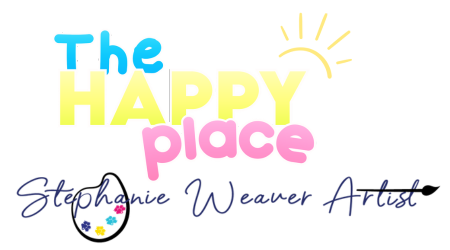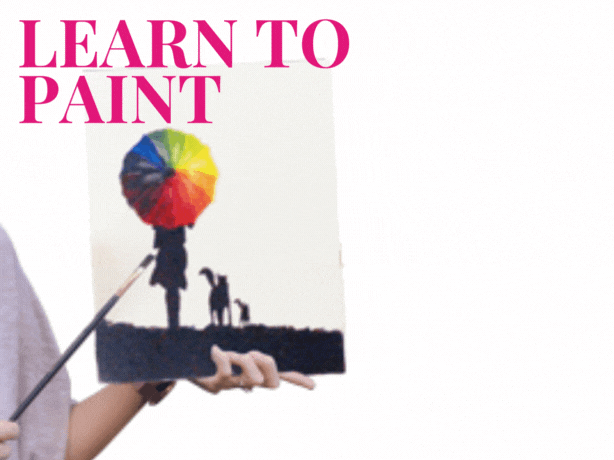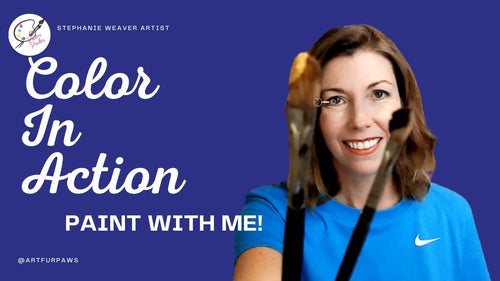Have you ever wondered why your favorite paintings always seem to have the perfect mix of colors? Or why some color combinations just don't seem to go together? It all comes down to understanding color theory. So if you're interested in learning more about how to use colors in your artwork, keep reading!
In this blog post, you'll review:
- History of Color Theory
- What is Color Theory
- Color Theory Vocabulary
- Color Psychology
- How to Use the Color Wheel
- Analogous Color Scheme
- Complimentary Color Scheme
- Split Complimentary Color Scheme
- Tools, Tips and Tricks of Color Theory, Color Wheel and Picking a Color Scheme
- How to memorize complimentary colors.
- Mobile options to have the color with you at all times.
- A website to help you pick a color scheme for your next painting or design project.
History of Color Theory
So much of what we do in art has a foundation in science and math: for example the rule of 3rds, the use of optics for the camera obscura, camera lucida, the golden ratio and color! (If you'd like to learn more about those, click here to start the Intro To Oil Painting). The color wheel and the color theory origin story is credited to Sir Isaac Newton.
The color wheel is an invention of experimentation and discovery during the Scientific Revolution, a period from about 1543-1687, when the scientific method was starting to be used to make discoveries instead of older assumption-based methods. Sir Isaac Newton is credited with creating the first color wheel. His color wheel was the product of his experiments with light and prisms. Newton observed light split into different colors, and then when the colors recombined made white light again. He made this finding into a schematic color wheel comprised of 7 colors in progressive succession with warm colors on one side and cool colors on the other.
Over time, additional people have contributed to the color wheel as it is today.
What is Color Theory
Color theory is the study of how colors are used in art and design. It includes the principles of color harmony, color contrast, and color saturation. Through understanding color theory artists can create more harmonious color schemes for pleasing designs and artwork, and it can also be used to create specific moods or effects in a work of art - more on that in the color psychology section coming up.
Color theory starts with the three primary colors, red, yellow, and blue, and the three secondary colors, purple, green, and orange. It also includes the six tertiary colors, which are made by combining a primary color with a secondary color.

What are Color Schemes
By using a simple color wheel we are also able to determine harmonious color combinations with any 2, 3 or 4 colors. The combination of other colors is called color schemes. Color schemes fit into 1 of 5 different color schemes: Monochromatic, Analogous, Complementary, Split Complementary, Triadic, and Tetradic color schemes.
In this article we are going to focus on the 3 most used basic color schemes: Complementary, Analogous and Split Complementary.
BUT Before we dive deeper into color schemes, color psychology, and more, we first need to visit some vocabulary!
Color Theory Vocabulary
I know, the vocabulary lesson is not fun...In truth, I avoided the color wheel for the first 10 years of painting, that said...I wish I had learned about the color wheel first thing because it takes the guessing out of choosing colors! Here are the common terms when referencing color:
TINT: A color plus white.
What this means: Add white (or a lighter color) to adjust the tint.
SHADE: A color plus black.
What this means: Add black (or a darker color) to adjust the shade.
SATURATION: A measure of how intense or vivid a color.
What this means: The level of color purity. Pure color is Red, Blue, Yellow (which are also the primary colors). If someone says "the color is too intense" or "this color jumped out at me" and you didn't mean for that to happen, calm the color down by adding the color opposite on the color wheel (aka complimentary color).
VALUE: Value scale is generally on a scale of 1-10. 1 being black and 10 being white.
What this means: Various shades of grey, from black to white. If someone says "I'd like to see more contrast", then either lighten or darken to create the contrast.
TEMPERATURE: Refers to how warm or cool a color is. The color wheel is divided into warm colors and cool colors. Warm colors are red, orange, and yellow, while cool colors are green, blue, indigo, and violet. Warm colors are on one half of the wheel, while cool colors are on the other half.
What this means: Warm colors bring things forward and have hints of red or yellow (typically in the foreground and are considered the "happy colors"). Cool colors set things back (less attention, typically in the background or in shadows), these are typically the blues and greens and convey a feeling of calmness and serenity.
COMPLEMENTARY COLOR: Complementary colors are two colors that are on the opposite side of the color wheel. They can either create an intense feeling when placed next to each other, or they can make the other color relax when mixed.
What this means: If you want to make a color pop, lay the complimentary color next to it thereby creating intense color relationships.
If you want to subdue a color or 'desaturate a color', mix it with its complimentary color. If you want to make a grey, mix the opposite color on the color wheel along in equal parts with white (blue + a little orange = grey).
ANALOGOUS COLOR: An analogous color scheme utilizes colors that are close together on the color wheel. If you want to make a calm painting, use the colors from the same side of the color wheel.
TERTIARY COLOR: Tertiary colors are the steps between the primary and secondary colors in a 12-part color wheel.
HUE: Dominant color wavelength and ignores value and saturation - this is a handy term to understand when you are editing colors in Adobe Photoshop. When it comes to non-digital the more commonly used term is color. When purchasing paint and it says "Hue" which means that the pigment is man-made and not the authentic color. For example "Cobalt Blue Hue" means it wasn't made with real cobalt.
Color Psychology
Colors evoke different emotions and feelings in people. With the knowledge of color psychology marketing experts, psychologists and artists can invoke feelings they want with the right color. For example, blue is often associated with calming feelings, while red can elicit feelings of excitement or rage or increase appetite (notice the next time you go to a restaurant what color the walls are).
Different shades and tints of colors can also produce different results; for example, when I worked for UPS at the Innoplex as a Senior Programmer Analyst, the interior design of the casbahs (our thinking and collaboration stations) had medium muted orange chairs (today I'd call it transparent earth orange) and other accents to inspire creativity, as orange is associated with invoking creative thought and they were muted to keep us calm.
By understanding the emotions that different colors evoke, you are empowered to invoke emotion when designing your logo, creating 2D or 3D artwork, product packaging, website, and everything else associated with your brand. So be sure to keep color psychology and color theory in mind. The use of color is a powerful tool, and you can make powerful statements, or send the completely wrong message, with the color palette you choose.
Here is a cheat sheet about the feelings and actions the colors evoke.


How To Use The Color Wheel
The primary reason we want to use the color wheel is to set the mood! To invoke emotion in our viewers. In this section, I'll use my artwork as examples of when I purposely chose color schemes to create the mood of the scene.
I paint from reference photos, but even though I use reference photos, my paintings do not always represent the image exactly. The reason for this is I want to set the mood and I do this with color. In this section, we'll discuss Complementary Color Schemes, Analogous Color schemes, and Split-complimentary and how these schemes can be used by the artist to invoke an emotion or set the scene for their artwork.
Complementary Color Scheme
When to Use Complementary Colors
Mood = Vibrant, Excited.
Complementary color schemes are tricky to use in large doses, but work well when you want something to stand out.

When colors from the opposite side of the color wheel are placed next to each other, the colors will pop. In the painting of a King Charles Spaniel, the color is primarily various shades of orange, the opposite color on the color wheel is shades of blue. This creates a very dynamic and eye-catching painting.

The Emu, titled "In Your Face" also uses blues and oranges to make this seemingly stressed-out bird appear as though he is in your face in dire need of coffee.
"Alabama Winter" is an example of complementary colors with the various shades and tints of purple and yellows in the skyline and complimentary colors of oranges and greens in the foreground.

Analogous Colors
When to Use Analogous Colors
Mood = Calm, Relaxing
- Analogous color schemes are often found in nature and are harmonious and pleasing to the eye.
- Make sure you have enough contrast when choosing an analogous color scheme.
- Choose one color to dominate, a second to support. The third color is used (along with black, white or gray) as an accent.
Analogous schemes utilize colors that are close together on the color wheel. For example, blues, greens, and purples, or reds, oranges, and yellows.
These colors are considered to have a close relationship and when used next to each other could produce a pleasing harmony.
The painting on the right of the chick could easily be a confrontational type of painting if I used complementary scheme background, but by choosing a color from the same side of the color wheel for the background the chick seems less threatening.
The Monochromatic Color Scheme is often confused with Analogous, BUT there is a subtle difference:
- Monochromatic color schemes are comprised of different tints, tones, and shades of a single hue (so what this means is you take a base color and either add white or black to a single color).
- Analogous color schemes are a group of 3 different colors that are adjacent to each other on the color wheel.

In the example above, I used the Analogous color scheme to create the calm feeling that exudes from this dog because, the dog, Buck, is a seizure detection dog. He was so calm and deliberate about his movements so I knew I wanted to exude the same feeling in his portrait painting.

"Ocean at Night" is an example of an analogous painting using a very limited color palette to create a calm ocean night scene.
Split - Complementary Colors
When to Use Split - Complementary Color Scheme
Mood = Relaxed but noticeable
This color scheme has the same strong visual contrast as the complementary color scheme but has less tension.
A split-complementary color scheme takes a base color and two secondary colors. It is similar to the complementary color scheme, but one of the complements is split.
The split complementary color scheme is versatile, pleasant, and easy to achieve.

"Happy Hour" is a sloth just hanging out. He is an example of another type of color scheme called the Split-Complementary Color Scheme. Where I combined both analogous and complementary colors to create a calm sloth and accented with complementary colors. The cool colors of the greens and blues surrounding the sloth make the brownish-orange of his face pop.
Tools, Tips, and Tricks of Color Theory, Color Wheel, and Picking a Color Scheme
In this section you'll see:
- a mnemonic device to memorize complimentary colors.
- tools and ideas to keep a color wheel handy
- a fabulous website to that will help you pick colors
If you want to see this instead of reading it, check out the video here that will provide you with some the following tips and tools!
Mnemonic device to Memorize Complimentary Colors
I have a free oil painting workshop where you get to paint a fabulous little painting of a color wheel and learn a bit about color theory and one of my students asked this question " How can I memorize the complimentary colors?" As a result, I created this mnemonic device so you can easily memorize it ( I even drew a goofy cartoon character image to go with it :)


3 Ways to Keep a Color Wheel With You At All Times
- Grab a Picture of a color wheel and use it as phone wallpaper.
- Grab this lapel pin or keychain available on Etsy.
- If you are super brave and have a tattoo artist you trust to not screw it up, get the color wheel tattooed (in the video above, I show someone who got the tattoo, but the color wheel isn't right...).
I've done the first 2 and admire those who are brave enough to do the 3rd!
Website Tool to Help Pick Color Schemes
Coolors is one of my favorites to identify the main color I want to use and the accent color that would set the piece off! It is a super easy color scheme generator. The generator provides 5 harmonious color choices that work well together to create color harmony. If you don’t like what it comes up with, then just hit the space bar and fly through endless color possibilities or if you like one of the colors, you can lock that color and the picker will generate 4 new colors! This is a fabulous place to start if you are trying to create abstract art, or create pop art to get fun ideas of color mixes. It is also great for your website branding because it provides the hex codes and to find out the color trends.
There are more websites that provide color schemes, but to be perfectly honest, Coolors.co is the easiest to use to find the best color combination for the project you have in mind, in my opinion. But in the interest of giving great info, here are other powerful tools to help you pick the right colors that speak to what you'd like to achieve:
- Adobe Kuler: This is great if you have a color in mind and your looking for complementary colors or other color rules.
- Flat design is a minimalist design style that highlights simplicity and efficiency.
Conclusion and Final Thoughts
So, what is color theory? Simply put, it’s the study of how colors interact with one another. It encompasses everything from the history of color to how we see and use colors in our everyday lives. Color theory along with the color wheel helps us understand why certain combinations create color harmonies when others don't and can give us guidance when choosing a color scheme for a painting or design project.
I hope you feel more confident about using color in your artwork! If you want to learn even more about color theory and paint with me, be sure to check out my free oil painting workshop here.
Pin It For Later









































